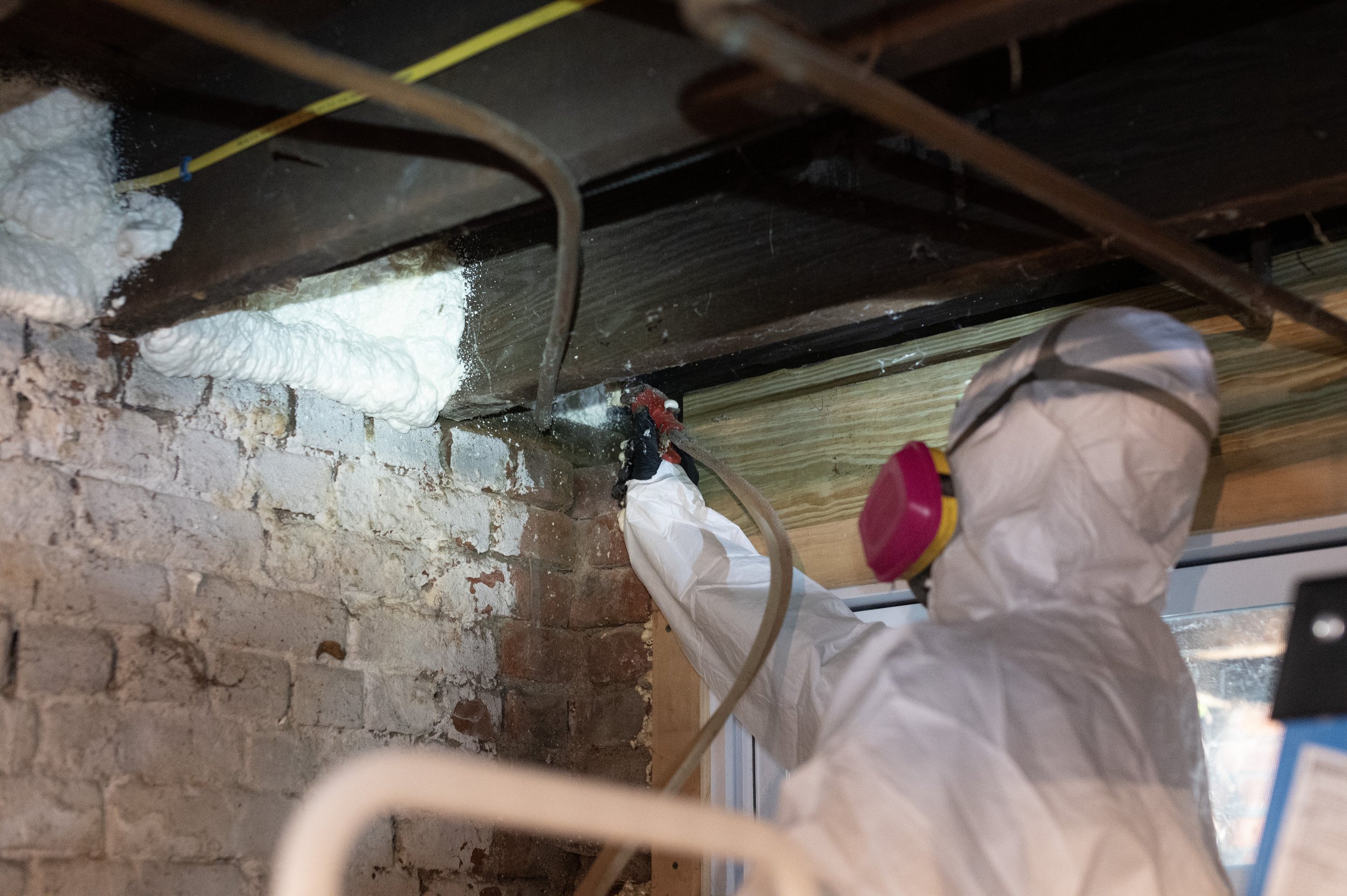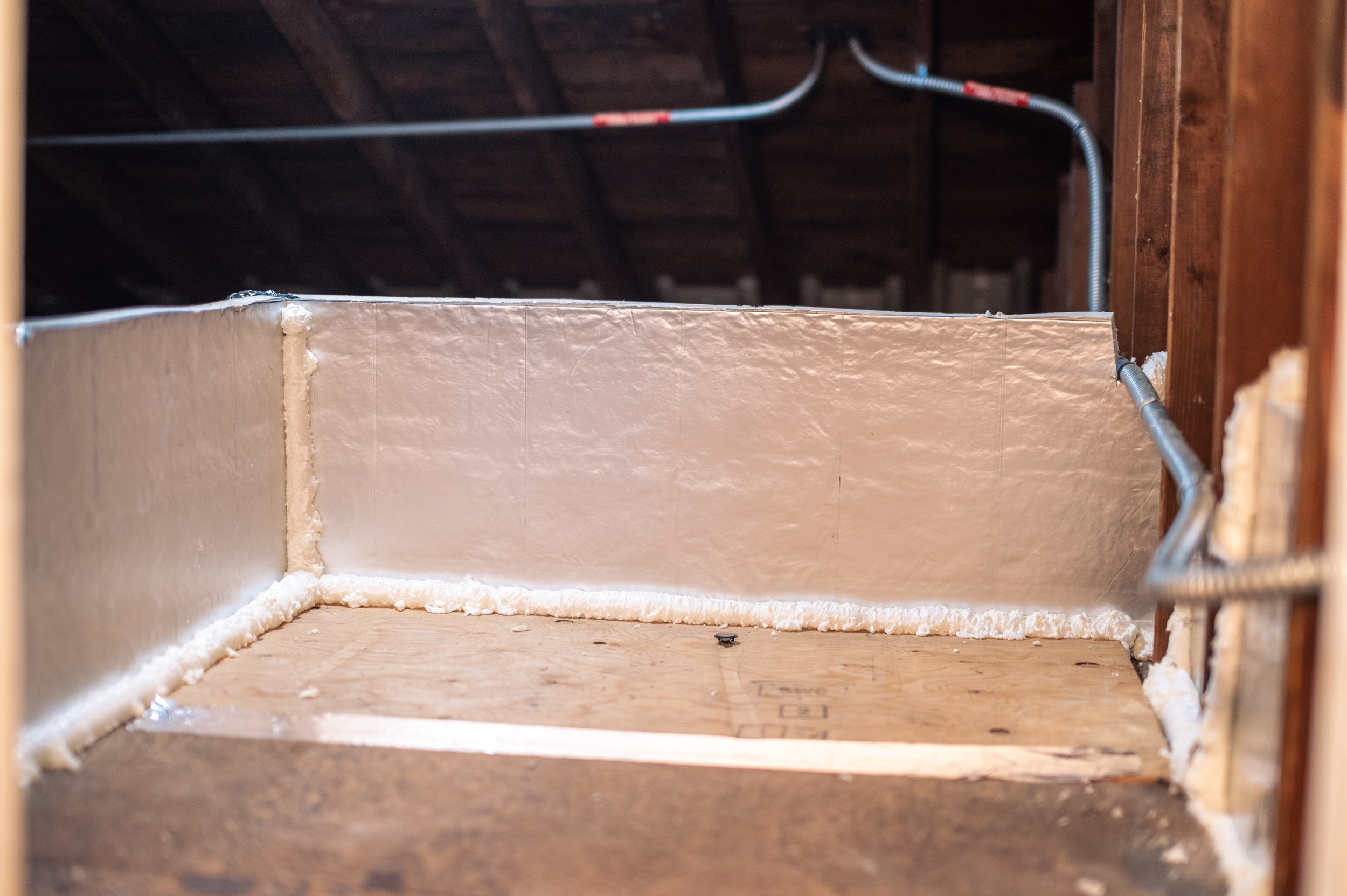
Spray Foam Installation
Installing Spray Foam Has Never Been Simpler
We handle most spray foam jobs whether that be just the rim joist or larger sections of a crawlspace to smaller sections which would include air sealing electrical or ventilation penetrations. If you are interested to have this type of work done, then Schedule a Home Energy Audit with us today so we can further discuss which options are best for you and your home!
Spray Foam Insulation:
Closed Cell Spray Foam insulation is denser, because the cells contain less air and are more compact. Because it is structural in nature, it can be used anywhere in the home—including garages and basements—adding 300 to 400% more strength to the home and acting as a substantial barrier against mold- and mildew-causing moisture in finished basements.
Closed cell foam is ideal for masonry and 2 x 4 or 2 x 6 framing and metal buildings. It won’t shrink or settle and offers:
Higher R-Values, up to R-17 in 2 x 4 construction and R-28 in 2 x 6 construction
Increased racking strength (up to 330-400%)
An excellent vapor barrier at .1 Perm (minimum 2 inches).
Open Cell Spray Foam is a type of foam in which the tiny cells that comprise it are not completely closed. It is typically less expensive because it uses fewer chemicals. While it is not recommended for outdoor applications, it can provide insulation in 2×6 walls and attics and sound reduction in interior walls during new home construction or renovations.
R-Values (a measure of thermal resistance) up to R-19 in 2 x 6 construction
A rapid expansion rate of 150 times its size in seconds
Great sound barrier properties
An impermeable air barrier
Vapor retarder.
An ideal solution for large voids, 2 x 6 or larger cavities, roof decks and cathedrals.
Foam Boards
These boards offer both air and thermal barriers. They consist of rigid foam similar to that of spray foam and typically have reflective foil on either side. These are great for many uses but in the picture to the right, it was installed under the floorboard in order to create a strong barrier. These boards also offer great soundproofing. Our typical application of foam boards is along knee-walls or other spaces adjacent to unconditioned areas to prevent air flow and improve the thermal barrier.



